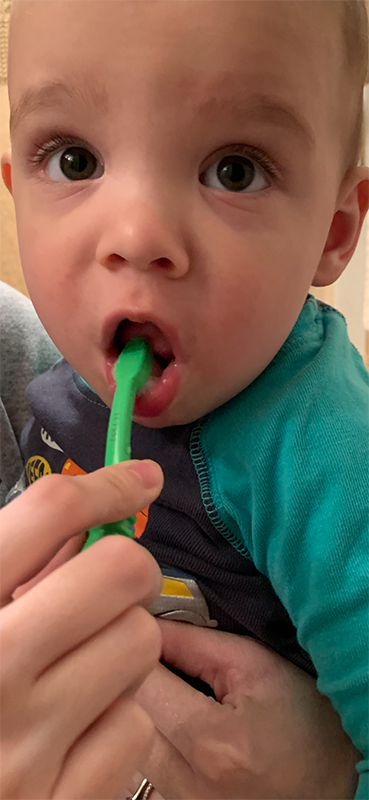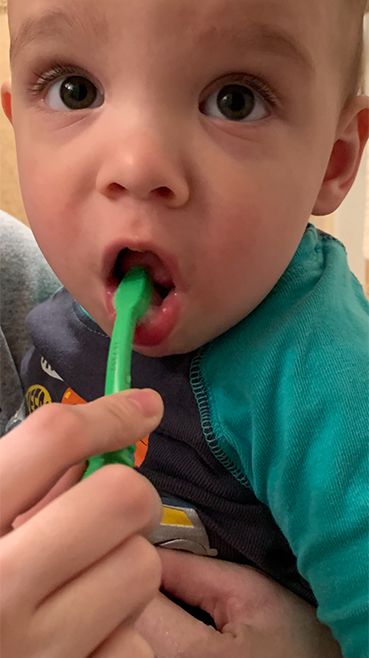Maybe you are a parent to the baby who just WON’T cut those teeth despite being a year old! Or, perhaps like me, you had one of those little ones whose first tooth erupted early around 4 months of life. Both scenarios are completely normal and are just one of many examples of how kids can be so different. Now that there’s a tooth, though, it begs the question: how are you supposed to take care of it?

To simplify the answer: brush that tooth, especially after milk! Most babies surprise us with their first tooth while they are still breastfeeding or taking formula. When the first tooth appears, it’s very important to brush the teeth after feeding, especially before a long sleep at night. Milk has natural sugar in it and leaving it to coat the teeth overnight can cause cavities, hence the term “baby bottle cavities”. If your baby is young enough to still be feeding overnight, wiping the gums and teeth off with a washcloth after feeding will help protect those teeth. It’s also important to have a bedtime routine established that includes teeth brushing AFTER the last bottle or nursing session of the evening! But when brushing teeth – do we recommend toothpaste, or not? And if so, is it supposed to have fluoride in it?
This answer is a little more complicated: Yes, we always recommend toothpaste. Kids between 2 and 3 years old should use a rice-sized smear of fluoride-containing toothpaste, and between ages 3 and 6 years they should use only a pea-sized amount of fluoride-containing toothpaste. A recent study done by the CDC demonstrated that most kids get too much fluoride, so direct supervision of teeth brushing at these ages is important. Under the age of 2, recommendations differ. The old recommendation is to avoid fluoride before the age of 2 due to the risk of ingestion. Ingested fluoride at early ages can cause fluorosis, which leads to permanent staining and discoloration of permanent teeth later in life. The CDC still maintains this recommendation. However, the American Academy of Pediatrics has adopted the same professional opinion as the American Academy of Pediatric Dentistry, which now recommends using fluoride-containing toothpaste, just in small amounts (a smear as tiny as a single grain of rice). The idea is that using only tiny amounts of fluoride protects the teeth from cavities but also isn’t putting the child at risk of fluorosis if the toothpaste is swallowed. There are a couple of important key points to take away. Fluoride is safe and protects kids’ teeth. As long as you’re using the recommended amount, no more than twice daily, your child is at very low risk of fluorosis. If you’re a family that drinks bottled water instead of tap water, it’s even more important to use fluoride (bottled water does not have fluoride added, unlike tap water). Plan on taking your child to the dentist around age 2.

